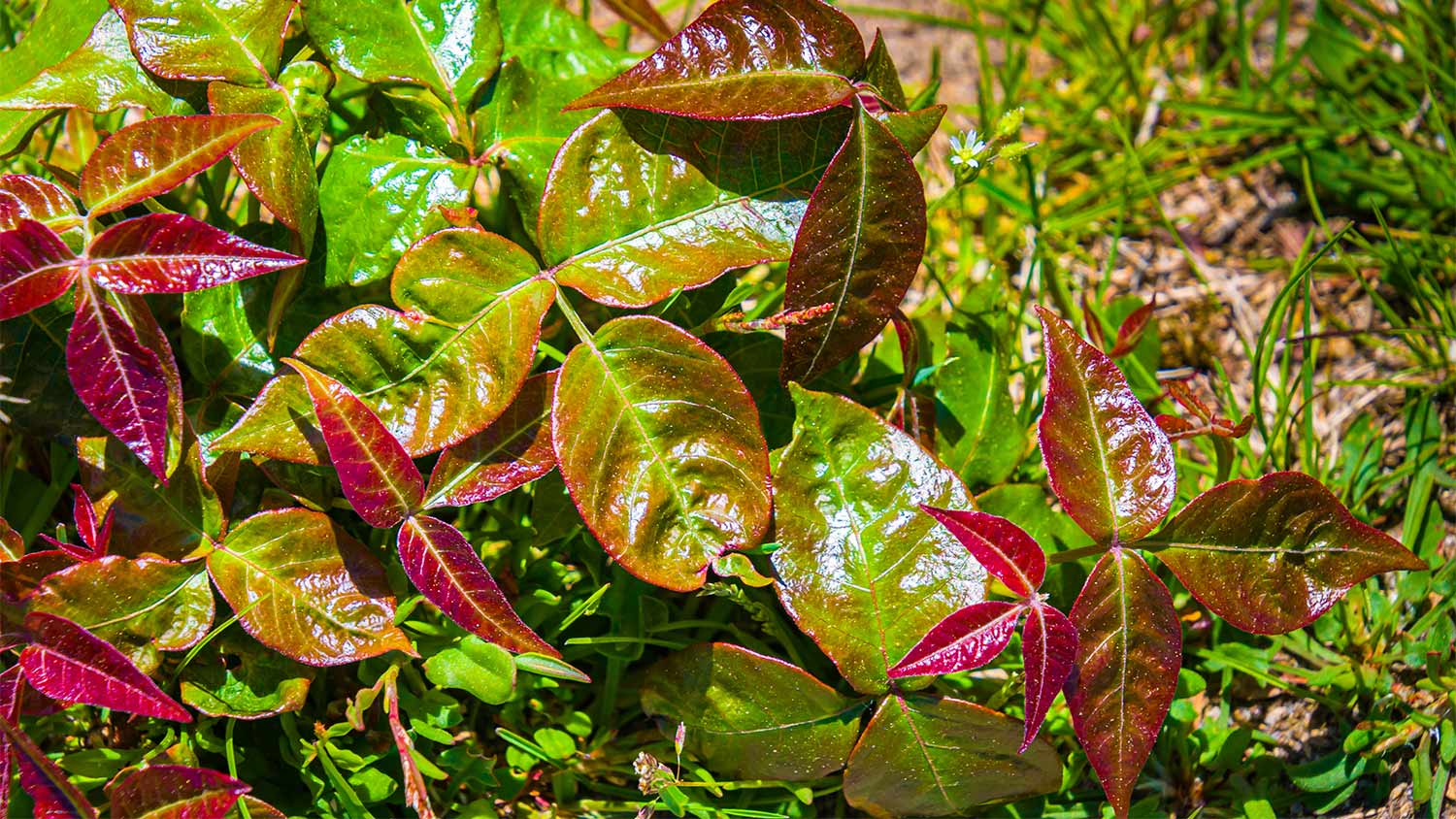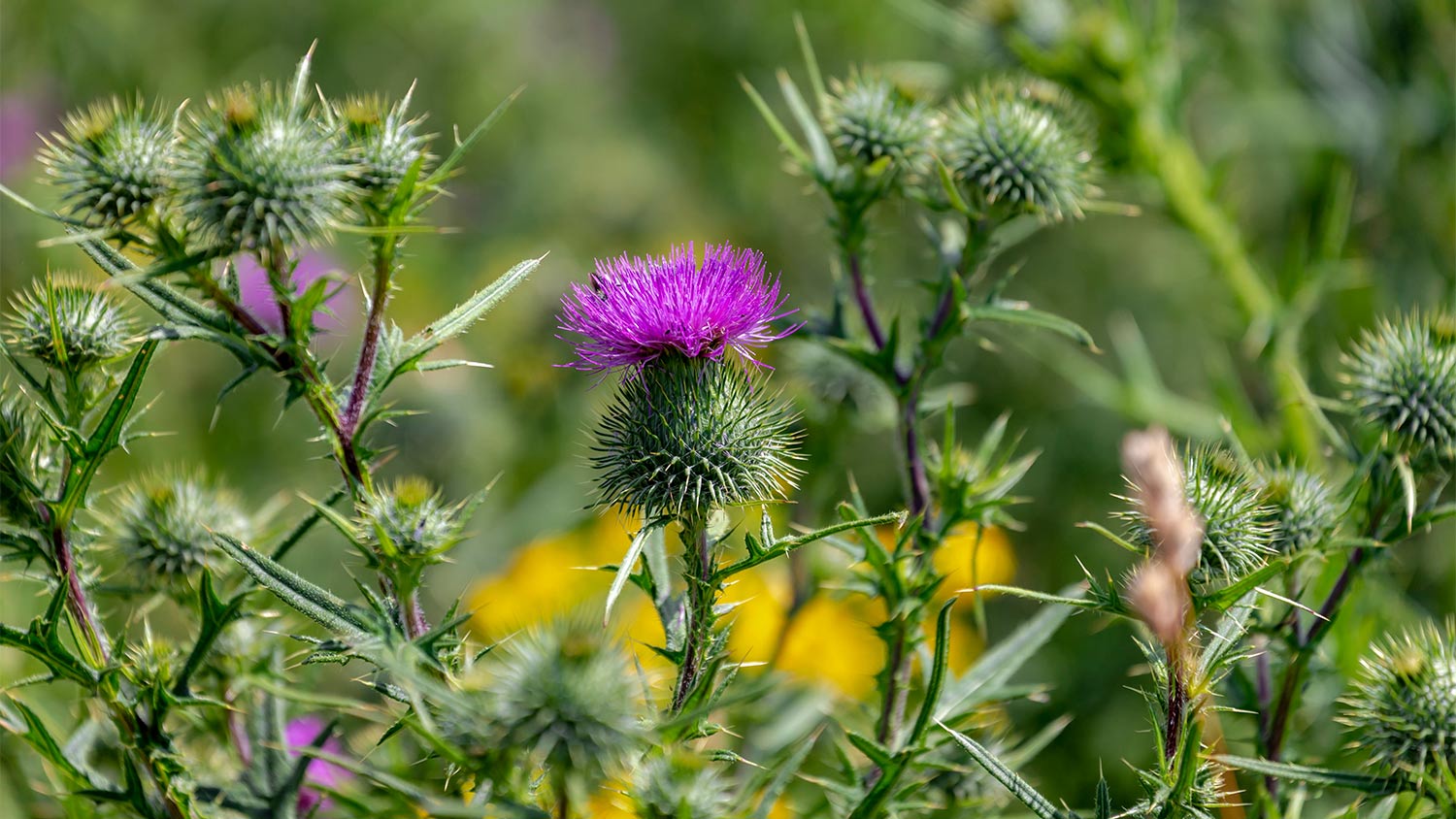
Your total lawn care cost depends on several factors, including the type of service and lawn size. Our guide will cover what you can expect to pay for lawn care.
There's nothing more obnoxious than a noxious weed


Noxious weeds are a special category of plants that harm local ecosystems.
The weeds often out-compete local and native plants.
Some noxious weeds are poisonous or an irritant to humans and animals.
While there's plenty of debate around what pushes a plant into the weed category—some of us love dandelions, thank you!—noxious weeds have a rather well-defined identity by the government.
These are the weeds that cause harm to your garden, local pollinators, animals, and even you. Let's clarify what noxious weeds are, how to identify major culprits in your yard, and how to safely and organically get rid of weeds for good.
According to the U.S. Bureau of Land Management, a noxious weed is "...any plant designated by federal, state, or local government officials as injurious to public health, agriculture, recreation, wildlife or property." The "weed" part of its name specifies that it must rapidly and persistently spread, often out-competing other native plants.
According to the Washington State Noxious Weed Control Board, a noxious weed can cause harm in direct and indirect ways. Directly, a noxious weed may be an irritant on the skin, reduce viability on roads, poison or injure livestock, and puncture tires on roads.
Indirectly, noxious weeds do their damage similar to invasive species. They can consume necessary resources from local ecosystems, displace land and aquatic wildlife, and aid in the spread of wildfires.

At this point, you may be thinking, "Ah yes, noxious weeds are invasive plants!" Well, sometimes yes, sometimes no. Invasive weeds are plants that grow and spread persistently outside of their natural habitats, but they may or may not cause harm to their new home.
If your local department of agriculture finds that the invasive plant does harm to the ecosystem, however, it could tip into the noxious category.
On the other side of things, noxious weeds are not always invasive, though many of them are. Some noxious weeds are native to the area but spread out of control when there is a drop in the plant's natural predators.
Here's how to compare the three definitions:
Weeds: An aggressively spreading plant deemed unwelcome in a specific area. Note that weeds are not necessarily harmful to the local ecosystem.
Invasive plants: Plants that grow outside of where they originally evolved, and therefore do not have natural predators to control their spread.
Noxious weeds: Plants that cause damage to local ecosystems, economies, or public health.
Lastly, it's worth mentioning that not all poisonous plants in your garden are noxious weeds. We know there are a lot of crossovers here. Daffodils, for example, are poisonous when consumed but do not spread aggressively as a weed. So, a plant can be noxious but not count as a noxious weed.

If you're concerned you have a noxious weed flourishing on your property, peruse the extensive federal list of noxious weeds or lists from your local department of agriculture. Let's take a look at the most common noxious weeds in the country today.
According to PennState Extension, the U.S. brought Autumn olive from eastern countries in the mid-19th century to assist with erosion and reinvigorate old mine sites. However, the non-native species spread so quickly and persistently that it often overtakes the resources needed by local plants, throwing off the food supply for local animals and insects.
Autumn olive grows as a tall and wide shrub that produces white and silver tubular flowers and green and red berries.
It's hard to miss the very common, tall, and spiky bull thistle plant that grows up to 6 feet and can quickly overtake a hiking trail. The thistle can thrive in dry and disturbed soils, making it a persistent weed in overgrazed pastures and along roadsides.
Identify bull thistle by its wide green and spike-covered branches, bulbous flower head, and occasional pink blooms that appear in their first year.
Don't let this plant's vibrant orange blooms fool you. Orange hawkweed can spread so quickly and aggressively that it can push out any other local ground cover or crops in the immediate area.
The plant spreads with rhizomes (stems), stolons, and seeds, making it highly difficult to control. The weed may flourish in your local area or lawn if you have highly acidic soil.
Growing up in the U.S., you were likely warned by your parents about how to identify the three shiny leaves of poison ivy. Poison ivy is a perennial shrub that can grow like a vine in yards, forests, and along trails.
Leaves are green throughout the summer and turn red or yellow in the autumn. You can identify them by their three leaflets and white waxy berries that develop after flowering.
The Centers for Disease Control and Prevention (CDC) warns against potential reactions when humans and animals are exposed to poison ivy, oak, and sumac. Poison ivy, for example, causes rash and blisters on the skin and lung irritation when inhaling burning fumes.
The rash from a poison oak plant is notorious in the west, and it can even cause extreme respiratory issues when burned and inhaled. Poison oak thrives in dry, sandy soils in conifer forests or along mountain orchards. The plant can be difficult to identify due to its many appearances throughout its lifespan.
While green and glossy in the spring, the set of three leaflets turns darker green in the summer and then red in the fall. Poison oak also flowers in the spring, sprouting small, yellow five-petaled blooms and cream-colored berries.
Rounding out the three most famous noxious weeds, we touch on another vine that contains the rash-inducing chemical urushiol. Ingesting the plant or inhaling burning fumes can be very harmful, and even fatal. Sumac begins as an orange plant in the spring before transitioning to a rich green.
Unlike oak and ivy, poison sumac has between seven and 13 smooth-edged leaves on a single branch. They then turn bright red and orange in the fall. Thankfully, sumac is not as common in yards, and primarily grows in very moist areas like bogs, swamps, and flood lands.
Quackgrass makes the noxious weed list for many states across the country, including California, Colorado, and Utah. It is common across the country, however, often overriding lawns and harming nearby plants.
Quackgrass, when left to its own devices, can rob your turf grass of precious nutrients and fill your lawn. You can spot quackgrass on your lawn due to its thick blades, taller-than-average growth, and thick rhizome-filled roots.
Earn your responsible gardener badge by keeping an eye out for potentially noxious plants and knowing what your state considers a dangerous weed.
Many state agricultural sites include weed-identifying tools that will include the following details.
Noxious plants have a habit of looking like native species and can be difficult to identify if you don't know what to look for. Use your regional agricultural websites for examples of noxious plants regulated by your state.
Narrow down the plant variety by knowing the shape of its leaves, color changes by season, flowering and fruit-bearing potential, and where the plants typically thrive.
Contact a local gardener to help you identify noxious weeds or invasive plants if you need help.
Since several noxious weeds can cause rashes—or worse—it's very important that you confirm the type of weed when in doubt of its identity.
Killing poison ivy, for example, must be done carefully to avoid a reaction. In other cases, pulling noxious weeds by hand is your best bet, always making sure to pull the whole plant up by the roots.
Whether the plants contain an irritant, spines, or burs, always wear thick gardening or work gloves, long-sleeved shirts, long pants, and work shoes when pulling up noxious weeds.
Organic weed control methods include not only removing weeds at first sight, but also ensuring you have well-draining soil, properly balanced soil nutrients, and maintaining a lawn that encourages healthy competition from native plants.
If you're in doubt about how to identify or remove noxious plants, hire a landscaper to safely remove the weed and set up a plan to prevent the species from coming back.
From average costs to expert advice, get all the answers you need to get your job done.

Your total lawn care cost depends on several factors, including the type of service and lawn size. Our guide will cover what you can expect to pay for lawn care.

How much it costs to rent a lawn aerator depends on what kind you rent and how long you rent it for. Read on for the full details.

The cost to reseed a lawn can vary depending on the size of your yard and the condition of the soil. We’ll help you figure out the true cost of reseeding or overseeding your lawn, along with whether or not you should hire a professional.

Why is my yard so soft and soggy? Use this helpful guide to diagnose the issue and implement a solution that will restore your yard’s health.

The best grass for high traffic lawns varies based on the planting location. These six grasses are the best choice for anyone who uses their lawn frequently.

If you’re tired of all the upkeep required with grass, consider these grass alternatives. Learn the pros and cons of each.